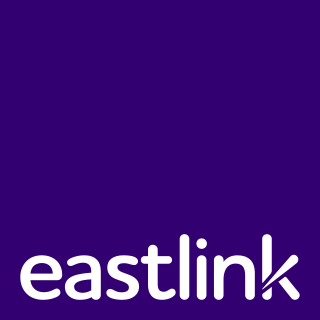
The National Telecommunications and Information Administration (NTIA) is an agency of the United States Department of Commerce that serves as the President's principal adviser on telecommunications policies pertaining to the United States' economic and technological advancement and to regulation of the telecommunications industry.

Internet access is the ability of individuals and organizations to connect to the Internet using computer terminals, computers, and other devices; and to access services such as email and the World Wide Web. Internet access is sold by Internet service providers (ISPs) delivering connectivity at a wide range of data transfer rates via various networking technologies. Many organizations, including a growing number of municipal entities, also provide cost-free wireless access and landlines.

A wireless Internet service provider (WISP) is an Internet service provider with a network based on wireless networking. Technology may include commonplace Wi-Fi wireless mesh networking, or proprietary equipment designed to operate over open 900 MHz, 2.4 GHz, 4.9, 5, 24, and 60 GHz bands or licensed frequencies in the UHF band, LMDS, and other bands from 6 GHz to 80 GHz.
Digitel Mobile Philippines, Inc., doing business as Sun Cellular, is a wholly owned subsidiary of Digital Telecommunications Philippines (Digitel), which in turn is owned by PLDT and is one of the Philippines’ largest mobile telecommunications companies. It was established by Digitel in September 2001 to provide wireless public and private telecommunications services. Sun Cellular is known for introducing unlimited call and text services in the Philippines.

Eastlink Inc. is a Canadian cable television and telecommunications company. The privately held company was founded in Nova Scotia in 1969 by the Bragg family, and has grown since through the amalgamation of several telecommunications companies.

nTelos, Inc. was a wireless telecommunications company and PCS provider based in Waynesboro, Virginia. As of 2013, nTelos' service area covered 5.3 million people making it the 9th largest provider of mobile broadband in the United States.
Municipal broadband is broadband Internet access owned by public entities. Services are often provided either fully or partially by local governments to residents within certain areas or jurisdictions. Common connection technologies include unlicensed wireless, licensed wireless, and fiber optic cable. Many cities that previously deployed Wi-Fi based solutions, like Comcast and Charter Spectrum, are switching to municipal broadband. Municipal fiber-to-the-home networks are becoming more prominent because of increased demand for modern audio and video applications, which are increasing bandwidth requirements by 40% per year. Supporters of municipal broadband argue that when cities create their own internet and broadband, customers ultimately get faster internet speeds, lower prices, and better customer service than from internet service providers. The purpose of municipal broadband is to provide internet access to those who cannot afford internet from internet service providers and local governments are increasingly investing in said services for their communities.

Clearwire Corporation was a telecommunications operator which provided mobile and fixed wireless broadband communications services to retail and wholesale customers in the United States, Belgium, Ireland and Spain. Clearwire traces its roots to 1998, when Sierra Technologies, Inc., spun off certain assets to form a new company, Clearwire Technologies Inc. In October 2003, Craig McCaw purchased Clearwire Technologies, Inc. parent company Clearwire Holdings and moved the company headquarters to Kirkland, Washington. In 2012, Clearwire moved the company headquarters to Bellevue, Washington.
The Universal Service Fund (USF) is a system of telecommunications subsidies and fees managed by the United States Federal Communications Commission (FCC) intended to promote universal access to telecommunications services in the United States. The FCC established the fund in 1997 in compliance with the Telecommunications Act of 1996. The FCC is a government agency that implements and enforces telecommunications regulations across the U.S. and its territories. The Universal Service Fund's budget ranges from $5–8 billion per year depending on the needs of the telecommunications providers. These needs include the cost to maintain the hardware needed for their services and the services themselves. The total 2019 proposed budget for the USF was $8.4 billion. The budget is revised quarterly allowing the service providers to accurately estimate their costs. As of 2019, roughly 60% of the USF budget was put towards “high-cost” areas, 19% went to libraries and schools, 13% was for low income areas, and 8% was for rural health care. In 2019 the rate for the USF budget was 24.4% of a telecom company's interstate and international end-user revenues.

Alvarion Technologies is a global provider of autonomous Wi-Fi networks designed with self-organizing capabilities, and solutions for carrier Wi-Fi, enterprise connectivity, smart city planning, smart hospitality, connected campuses, and connected events.
Internet in Australia first became available on a permanent basis to universities in Australia in May 1989, via AARNet. Pegasus Networks was Australia's first public Internet provider in June 1989. The first commercial dial-up Internet Service Provider (ISP) appeared in capital cities soon after, and by the mid-1990s almost the entire country had a range of choices of dial-up ISPs. Today, Internet access is available through a range of technologies, i.e. hybrid fibre coaxial cable, digital subscriber line (DSL), Integrated Services Digital Network (ISDN) and satellite Internet. In July 2009, the federal government, in partnership with the industrial sector, began rolling out a nationwide fibre-to-the-premises (FTTP) and improved fixed wireless and satellite access through the National Broadband Network. Subsequently, the roll out was downgraded to a Multi-Technology Mix on the promise of it being less expensive and with earlier completion. In October 2020, the federal government announced an upgrade by 2023 of NBN fibre-to-the-node (FTTN) services to FTTP for 2 million households, at a cost of A$3.5 billion.
Internet access is widely available in New Zealand, with 93% of New Zealanders having access to the internet as of January 2020. It first became accessible to university students in the country in 1989. As of June 2018, there are 1,867,000 broadband connections, of which 1,524,000 are residential and 361,000 are business or government.

The Internet in the United States grew out of the ARPANET, a network sponsored by the Advanced Research Projects Agency of the U.S. Department of Defense during the 1960s. The Internet in the United States in turn provided the foundation for the worldwide Internet of today.
Rural Internet describes the characteristics of Internet service in rural areas, which are settled places outside towns and cities. Inhabitants live in villages, hamlets, on farms and in other isolated houses. Mountains and other terrain can impede rural Internet access.

South African wireless community networks are wireless networks that allow members to talk, send messages, share files and play games independent of the commercial landline and mobile telephone networks. Most of them use WiFi technology and many are wireless mesh networks. A wireless community network may connect to the public switched telephone network and/or the Internet, but there are various restrictions on connectivity in South Africa. Wireless community networks are particularly useful in areas where commercial telecommunications services are unavailable or unaffordable.
The Broadband Stakeholder Group is the UK government's advisory body on broadband. Created in 2001 by then Minister for E-Commerce and Competitiveness Stephen Timms, it provides a neutral forum for organisations across the converging broadband value-chain to discuss and resolve key policy, regulatory and commercial issues, with the ultimate aim of helping to create a strong and competitive UK knowledge economy.
Broadband for Rural Nova Scotia was a government initiative intended to provide broadband services to 100% of civic addresses in Nova Scotia, Canada. The initiative was a public private partnership co-funded by the governments of Canada and Nova Scotia, and three Internet service providers. The Motorola Canopy fixed wireless 900 MHz system was selected in 2006–7 to provide the service. Prior to this program it had not been deployed in Nova Scotia.

Broadband is a term normally considered to be synonymous with a high-speed connection to the internet. Suitability for certain applications, or technically a certain quality of service, is often assumed. For instance, low round trip delay would normally be assumed to be well under 150ms and suitable for Voice over IP, online gaming, financial trading especially arbitrage, virtual private networks and other latency-sensitive applications. This would rule out satellite Internet as inherently high-latency. In some applications, utility-grade reliability or security are often also assumed or defined as requirements. There is no single definition of broadband and official plans may refer to any or none of these criteria.
Connecting America: The National Broadband Plan is a Federal Communications Commission (FCC) plan to improve Internet access in the United States. The FCC was directed to create the plan by the American Recovery and Reinvestment Act of 2009, and unveiled its plan on March 16, 2010.

Broadband mapping in the United States are efforts to describe geographically how Internet access service from telephone and cable TV companies is available in terms of available speed and price. Mapping has been done on the national as well as the state level. The efforts are seen as preliminary steps towards broadband universal service.









